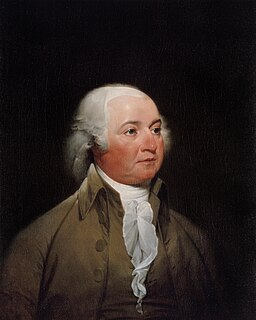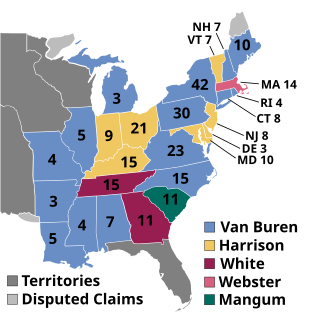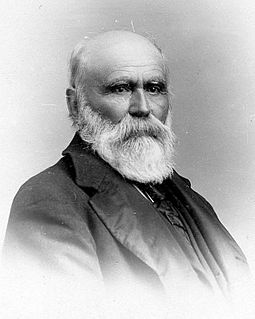
The Twelfth Amendment to the United States Constitution provides the procedure for electing the President and Vice President. It replaced the procedure provided in Article II, Section 1, Clause 3, by which the Electoral College originally functioned. The amendment was proposed by the Congress on December 9, 1803, and was ratified by the requisite three-fourths of state legislatures on June 15, 1804. The new rules took effect for the 1804 presidential election and have governed all subsequent presidential elections.

The United States presidential election of 1796 was the third quadrennial presidential election. It was held from Friday, November 4 to Wednesday, December 7, 1796. It was the first contested American presidential election, the first presidential election in which political parties played a dominant role, and the only presidential election in which a president and vice president were elected from opposing tickets. Incumbent Vice President John Adams of the Federalist Party defeated former Secretary of State Thomas Jefferson of the Democratic-Republican Party.

The United States presidential election of 1836 was the 13th quadrennial presidential election, held from Thursday, November 3, to Wednesday, December 7, 1836. In the third consecutive election victory for the Democratic Party, incumbent Vice President Martin Van Buren defeated four candidates fielded by the nascent Whig Party.

The 1860 United States presidential election was the nineteenth quadrennial presidential election to select the President and Vice President of the United States. The election was held on Tuesday, November 6, 1860. In a four-way contest, the Republican Party ticket of Abraham Lincoln and Hannibal Hamlin emerged triumphant. The election of Lincoln served as the primary catalyst of the American Civil War.

The United States Electoral College is a body of electors established by the United States Constitution, constituted every four years for the sole purpose of electing the president and vice president of the United States. The Electoral College consists of 538 electors, and an absolute majority of 270 electoral votes is required to win an election. Pursuant to Article II, Section 1, Clause 2, the legislature of each state determines the manner by which its electors are chosen. Each state's number of electors is equal to the combined total of the state's membership in the Senate and House of Representatives; currently there are 100 senators and 435 representatives. Additionally, the Twenty-third Amendment provides that the District of Columbia (D.C.) is entitled to a number of electors no greater than that of the least populous state.

In United States presidential elections, a faithless elector is a member of the United States Electoral College who does not vote for the presidential or vice-presidential candidate for whom they had pledged to vote. That is, they break faith with the candidate they were pledged to and vote for another candidate, or fail to vote. A pledged elector is only considered a faithless elector by breaking their pledge; unpledged electors have no pledge to break.
The President-elect of the United States is the person who has won the quadrennial presidential election in the United States, but who has not yet been inaugurated as President of the United States. President-elect is also the honorific title accorded to this individual.

The election of president and vice president of the United States is an indirect election in which citizens of the United States who are registered to vote in one of the 50 U.S. states or in Washington, D.C. cast ballots not directly for those offices, but instead for members of the U.S. Electoral College, known as electors. These electors then in turn cast direct votes, known as electoral votes, for president, and for vice president. The candidate who receives an absolute majority of electoral votes is then elected to that office. If no candidate receives an absolute majority of the votes for President, the House of Representatives chooses the winner; if no one receives an absolute majority of the votes for Vice President, then the Senate chooses the winner.

Presidential elections were held in the United States of Colombia in 1864. The Liberal Party was the only party to nominate candidates, and the result was a victory for Manuel Murillo Toro.

Presidential elections were held in the United States of Colombia in February 1866. The result was a victory for Tomás Cipriano de Mosquera of the Liberal Party.

Presidential elections were held in the United States of Colombia in 1868. The result was a victory for Santos Gutiérrez of the Liberal Party.

Presidential elections were held in the United States of Colombia in 1870. The result was a victory for Eustorgio Salgar of the Liberal Party.

Presidential elections were held in the United States of Colombia in 1872. The result was a victory for Manuel Murillo Toro of the Liberal Party.

Presidential elections were held in the United States of Colombia in 1874. The result was a victory for Santiago Pérez de Manosalbas of the Liberal Party.

Presidential elections were held in the United States of Colombia in 1878. The result was a victory for Julián Trujillo Largacha of the Liberal Party.

Presidential elections were held in the United States of Colombia in 1880. The result was a victory for Rafael Núñez of the Liberal Party.

Presidential elections were held in the United States of Colombia in 1882. The result was a victory for Francisco Javier Zaldúa of the Liberal Party.

Presidential elections were held in the United States of Colombia in 1884. The result was a victory for Rafael Núñez of the Liberal Party.
In the United States, a contingent election is the procedure used in presidential elections in the case where no candidate wins an absolute majority of votes in the Electoral College, the constitutional mechanism for electing the President and the Vice President of the United States. A contingent election for the president is decided by a vote of the United States House of Representatives, and the contingent election for the vice president is decided by a vote of the United States Senate. The contingent election procedure, along with the other parts of the presidential election process, was first established in Article Two, Section 1, Clause 3 of the United States Constitution, and then modified by the 12th Amendment in 1804.














